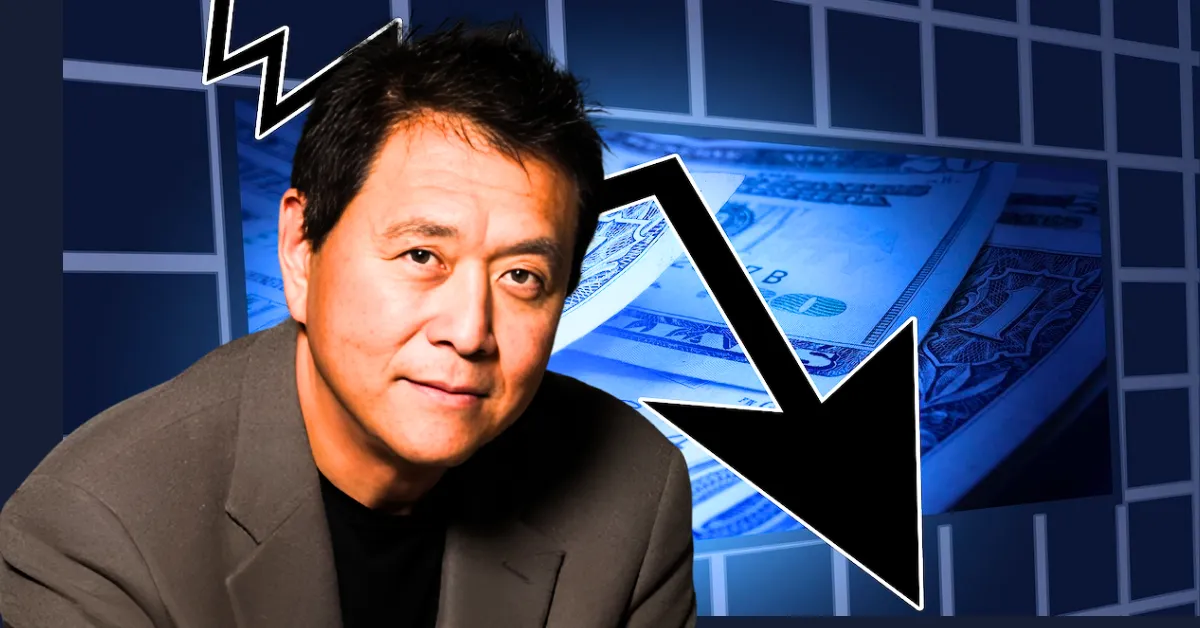Unraveling Robert Kiyosaki’s Warning: A Market Crash Beyond 1929?
The Anatomy of a Looming Financial Storm
Robert Kiyosaki’s recent alarm about an impending financial crisis surpassing the 1929 Wall Street crash captures attention not just for its boldness but for the context it emerges from. Central to his warning is Moody’s historic downgrade of the U.S. credit rating—a signal that shakes the foundation of investor confidence and highlights systemic fiscal vulnerabilities. This downgrade is more than a ratings adjustment; it is a clarion call revealing the precarious balance of the global economy, where soaring debt levels and diminishing trust in financial governance collide.
The $36 trillion national debt, a staggering figure that dwarfs historical comparables, illustrates a government running a fiscal marathon with heavy weights chained to its ankles. Moody’s downgrade reflects skepticism about America’s ability to manage this debt, which threatens to raise borrowing costs, reduce liquidity, and slow economic momentum. For investors, these signals translate into heightened risk and market volatility, elements Kiyosaki views as the tinder igniting a potentially devastating economic wildfire.
Beyond 1929: The “Everything Bubble” and Systemic Vulnerabilities
What distinguishes Kiyosaki’s crisis narrative is its framing of the event not as an isolated market correction but as the bursting of an all-encompassing “everything bubble.” Unlike the singular focus of the 1929 crash on stock prices, today’s bubble encompasses assets from real estate to bonds, commodities to cryptocurrencies—all inflated by decades of cheap money policies and unchecked credit expansion.
Key factors feeding this bubble and its likely burst include:
– Debt Overload: Government, corporate, and consumer debts are intertwined, creating complex vulnerabilities.
– Rating Downgrades: Symbolizing eroding confidence in fiscal management and economic durability.
– Interest Rate Pressures: Rising rates that threaten to choke off growth and inflate debt service burdens.
– Geopolitical and Trade Uncertainties: Adding layers of stress to already fragile financial systems.
This interconnectedness means any shock may propagate swiftly and unpredictably, amplifying the economic downturn in ways unprecedented before.
Asset Shelter Strategies: Kiyosaki’s Prescription for Turbulence
In the face of a predicted collapse, Kiyosaki advocates for reallocating wealth away from traditional fiat currencies and volatile equities toward assets with inherent durability. His emphasis on gold and silver taps into centuries of precedent where precious metals act as safe havens during inflationary and deflationary shocks alike. Similarly, his endorsement of Bitcoin and select cryptocurrencies reflects an acknowledgment of evolving financial landscapes where decentralized digital currencies may serve as inflation hedges immune to central bank policies.
His caution against reliance on government bailouts or fiat money underscores a fundamental loss of faith in conventional financial safety nets. For those aligning their portfolios with this mindset, diversification into tangible assets and cryptos could be critical in preserving value through turbulent times.
Lessons Drawn from History: The 1929 Parallel and Modern Complexities
The Great Depression’s roots in speculative excess and banking failures resonate strongly with today’s environment featuring asset overvaluation and debt build-up. Yet, the global economy’s current complexity—characterized by intricate financial interdependencies and rapid information flow—could make the next downturn more profound and less predictable.
Kiyosaki’s historical comparison is not mere alarmism but a nuanced warning that while history may not repeat exactly, patterns of unsustainable financial behavior often do. The absence of an “easy reset” spotlights the urgency of prudent financial planning and risk awareness.
Navigating Skepticism: Balancing Alarm with Pragmatism
Critics often label Kiyosaki’s forecasts as perennial doomsaying, noting that past predictions did not materialize as promptly or as severely. However, the current financial landscape, with Moody’s downgrade and inflated debt metrics, lends fresh gravity to his warnings. His advocacy for preparation over panic represents measured counsel—urging investors to reassess risks, limit exposure to vulnerable assets, and prioritize diversification.
This balanced approach underscores financial resilience as a strategic advantage, turning crisis forecasts into actionable insight rather than paralyzing fear.
Charting a Course for Financial Resilience
Facing the potential storm, individual strategies become paramount. Diversification into assets less correlated with traditional markets can provide crucial stability. Managing personal debt enhances financial flexibility, buffering against adverse economic shifts. Maintaining a long-term perspective helps resist reactionary moves amid volatility, while ongoing education about economic indicators fosters informed decision-making.
Kiyosaki’s message encourages empowerment through knowledge and proactive steps, transforming uncertainty into opportunity.
Conclusion: A Moment for Vigilance and Strategy
Robert Kiyosaki’s stark analysis, anchored by Moody’s rare U.S. credit downgrade, vividly underscores vulnerabilities in today’s economic fabric. His portrait of a crisis exceeding the scale of 1929 demands serious reflection on debt risks, market bubbles, and fiscal governance. While debate persists around timing and severity, the essence of his warning—persistent unsustainable debt and shaken confidence—remains robust.
For those willing to heed these signals, this unfolding scenario offers both a challenge and a chance: to safeguard wealth, rethink strategies, and emerge prepared for a redefined economic landscape. In a world rife with uncertainty, such readiness may prove to be the most valuable asset of all.











